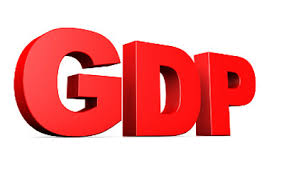 |
| Sujit Kumar Economist |
Economic Advisory Council (EAC) to the Prime Minister has rebutted Dr. Arvind Subramanian (AS)'s claims about India overestimating GDP post 2011. The EAC has challenged AS on four counts: a) Motive b) Methodology c) Data and d) Inferences.
a) Of motive, AS should have spoken his mind while being a CEA to MoF. His influence on data collection, estimation and reporting would have been much greater had he taken interest much earlier. Doubting so in 2019 smells of an argument of convenience.
b) AS methodology, to put it mildly, is unconventional and bizarre as far as GDP estimation is concerned. Correlation of a select indicators can't be substitute for rigorous collection, collation and estimation of data on value add for a large and complex economy like India. His analysis of cross-country comparison also is unique as AS presume other countries reporting is sacrosanct while India a suspect.
c) Selection of data and variables: For 17 indicators AS chose, he also leaves a great many other indicators which would paint a picture contrary to his inferences. For example, tax collection, which is actual and not surveyed, data is ignored. Likewise, wage growth data shows robust gains post 2012. Similarly, his choice of reference years 2001-11 and 2012-17 are also prone to scrutiny. As Swaminathan Aiyar has shown, changing the reference period by two years, i.e. first period beginning 2003-11 could make 2012-17 period reported GDP look weaker enough, in consonance with broad trends painted by 17 indicators AS has chosen. 2001 was a year of global recession and 2002 a drought year in India, which meant GDP growth was below 5% during this couple of years. If included, it will pull down average of 2001-11 period by a percentage points, which makes basis for AS claims that no visible slowdown reflect in 2012 onward period GDP data even as 17 indicator show slowdown.
d) His inferences from the data. His conclusion: since correlation is not signalling the same story in two periods, the GDP must be overestimated. He ignores the productivity gains as well as change in structure of economy. By mostly focusing on Manufacturing sector divergence in volume based estimate (IIP) vs value added estimate in GDP, he actually overlooked any changes in Agriculture and Services, which together account for 3/4th of economy. His conclusion of GDP growth being 4.5% post 2012 period doesn't corroborate with actual experience of economy. Not a major crisis manifested and no loss of confidence shown by investors.
To sum up, it's time we move past the perception cage we have all got ourselves into. It is better to leave matters to experts , the statisticians, who do a rigorous effort to bring us a simple measure of economic activity to inform our past, present and way ahead.

Comments
Post a Comment